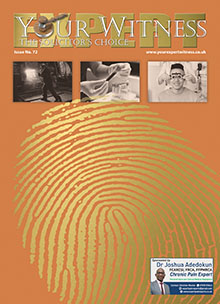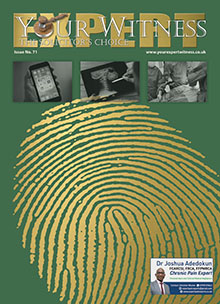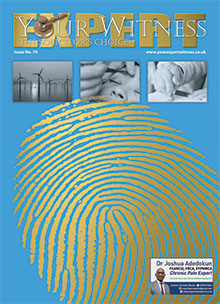An embryological journey
If only it were so simple. After all, herniae are common in infants and young boys who hardly strain at all (except to fill their nappies) and we all strain from time to time but most of us never develop a hernia. In order for me to explain I need to take you on a journey. Come with me to the start, in a mother's womb. One of the last bits of male development in the foetus is the appearance of testes in the scrotum.
Earlier, each testis develops with its kidney on the back wall of the abdomen; but it eventually breaks free and migrates down and round to the front and then through a tunnel in the muscles of the groin, or inguinal, region. This tunnel leads to the neck of the scrotum and then on down to where most testes end up. Any problem with this leads to undescended testis, a common congenital abnormality which either rights itself in the first few years of life or needs a surgical operation to correct it.
A muscular tunnel
If this tunnel, called the inguinal canal, did not exist, normal testicular descent could not occur. So this is a natural canal, which we all have – men and women – leading from inside the tummy to outside and is not, in fact, a 'weakness' at all (but see below). Although women do not 'need' such a canal we all have the same basic anatomy so it is there, albeit much narrower than in men.
It is an oblique tunnel through the three layers of muscle of the anterior abdominal wall and it is this obliqueness, with muscle at the front protecting the deep opening and muscle at the back protecting the superficial opening, which prevents us all from having herniae from birth.
The wandering testis
So the scene is set. As the testis floats through the canal it takes with it a tube of peritoneum which closes off behind. But if, as is common, the tube does not close properly tummy content, be it bowel or omentum (the fatty tissue which lies over the bowel in all of us), can easily slip into it. This is why herniae are common in male infants and boys. But this tube of peritoneum may stay partially closed and empty for a very long time: until, one day, that proverbial strain pushes a loop of bowel or omental fat into it. This can be many years later, even in old age. And it can also, and often does, occur without any memorable straining event at all.
The dilemma
You will now understand why there are surgeons who say all herniae have a congenital basis even if a strain is 'the last straw' which brings one into being. So their view is that there can never be any liability for a hernia since they occur commonly without straining and even if there was a strain the hernia was going to happen anyway, sooner or later. But more on this later.
Are there different types of herniae?
What I have described is called an indirect inguinal hernia. But there are others – direct inguinal hernia and, in different parts of the body, femoral hernia, umbilical or paraumbilical hernia, epigastric hernia and rarer ones such as Spigelian hernia. In case you were wondering, a hiatus hernia is rather different (another article, another day?). The aetiology of a hernia at the navel is obvious, after all that is where the umbilical cord came through the abdominal wall, and the others, including direct inguinal hernia, more closely fit the 'weak muscle' idea.
Direct inguinal hernia differs from the indirect variety in that the peritoneal sac has pushed forwards through weak muscles in the inguinal region rather than down the canal. It is more common in older men and, rather fewer, older women but there is no age at which it becomes the exclusive type of groin hernia; I have seen large indirect herniae in 80 year olds and a few direct herniae in 20 year olds; you just can't tell.
What difference does the type of hernia make
But does it matter? Certainly not from a therapeutic point of view, these days, because all herniae are repaired in the same way – using the non-tension mesh technique. It used to make a difference when herniae were repaired by stitching and there were different techniques for different types of hernia. The modern operation, though, is very straightforward and can even easily be accomplished under local as well as general anaesthetic. In essence, the hernia is pushed back and a piece of mesh placed over the posterior wall of the inguinal region to cover completely the whole area. The mesh is permanent and becomes incorporated in scar tissue which is tough so recurrences are far less common than they used to be in the days when we used stitches which could 'cut out'. In the very best hands recurrence rates are around 0.1 % although most surgeons accept 1 % or 2% recurrence rates.
The repair and recovery
This repair can be accomplished through an inguinal incision, the so called 'open approach', or from within the abdominal cavity using laparoscopic, or keyhole, surgery and there are pros and cons for each approach. After any type of hernia repair I would expect most patients to be back at all their normal daily activities by about two weeks, or even more quickly after a laparoscopic repair. I am sorry to say that many doctors have not yet realised this fundamental change from the days when herniae were suture repaired, even though this operation has been commonplace for more than ten years. Patients must be warned about bruising and swelling but a competent non-tension mesh hernia repair should not remain painful for long unless a nerve has become inadvertently trapped.
What are the legal implications?
I have mentioned the dilemma of the aetiology of herniae. But even if this is so, and it applies less obviously to direct inguinal hernia and many other types, the fact is that the patient may have continued for many years before developing his/her hernia or may not have developed it at all, had it not been for that exceptional straining episode shortly before it developed.
A question which is more difficult to answer is how soon after a strain must a hernia appear for the one to be considered to have led to the other? After all, most herniae occur without any obvious predisposing efforts and both straining and herniae are very common so coincidences must be expected. My opinion is that something – discomfort, pain or an actual lump – should have been noticed by the client within, say, 48 hours. In the cases I see this is usually what happens and a patient, for such he/she now is, has visited his/her general practitioner and the problem is noted in the medical records. It may not yet be definitely diagnosed as a hernia but at least there is a note about a groin strain. So what about that alternative diagnosis?
Is a groin strain different?
A muscular groin strain can be difficult to differentiate from a small hernia. Groin strains are usually related to prolonged activity, particularly sporting activity, rather than a sudden strain, but not always. They are due to tearing of muscle or ligament fibres and only rarely will there be an associated hernia. They can cause a great deal of morbidity, over a period of many months, but they do usually settle without surgical intervention. For a select few that do not settle there is an operation, sometimes called 'Gilmore's groin repair', in which the muscle and ligament at the top of the thigh is reinforced with stitches or staples. But you need to know that there is some disagreement in surgical circles about whether'Gilmore's Groin' is or is not a real diagnosis and how much the operation is no more than a placebo.
Are herniae painful?
Groin strains are always painful. But are herniae? The large majority of herniae, at all sites, are not painful. They are just swellings which usually disappear with recumbency and reappear and enlarge with activity. Maybe 10% of inguinal herniae are painful and, by and large, this tends to be the smaller ones which are more likely to be nipped by stronger muscles before they have been stretched around a larger defect. There is no reason to stop working or lifting just because you have a hernia – it usually does not increase the pain and it does not increase the risk of strangulation. Even if the hernia enlarges this makes little difference to the mesh repair.
Are there any risks?
Yes. I believe all herniae should be repaired as soon as is convenient because they all, large and small, risk strangulation. Astrangulated hernia is one where a bowel loop has become so compressed at its neck that blood can no longer flow through its blood vessels. And any tissue without a blood supply will die unless the flow is restored soon, so this is a surgical emergency. There is a stage before strangulation when the hernia is merely obstructed but this, too, requires an urgent surgical opinion before it develops into a full-blown strangulation. There seems to be no obvious reason why a hernia should suddenly strangulate; it can happen during sleep or whilst working.
Does it matter whether the hernia is reducible or not?
No. Smaller herniae are almost always reducible but probably at greater risk of strangulation because their necks are tighter and large herniae become irreducible even though their necks have been widely stretched. Whether or not the groin swelling can be pushed back has no bearing on whether it will obstruct or strangulate now or later.
What is the liability and causation?
There are many myths about hernia – straining, time off work, pain and dangers. Hernia and straining are both common. Both usually have no severe consequence. If you believe in coincidence all herniae just happen. But I am convinced straining can cause a hernia and if this was due to unexpected, unusual and/or unplanned activity at work the employer may be liable. I am also convinced that the recovery from the modern mesh operation is rapid and there is no reason to 'take it easy' or avoid lifting and straining, even straightaway (but the repair will be too tender to allow anything too strenuous for the first few days!).
Surgical folklore is stubborn and slow to change. If a patient is advised to stop working what else is he expected to do? And if he is advised to take six weeks off work after his repair that is the surgeon's or general practitioner's mistake, not the patient's.
Finally, since recurrence is now so unusual continuing post-operative pain has become a problem. There should be no great pain after the first few days but a chronic neuralgia type pain does occur due to inadvertent and largely unavoidable bruising or crushing of nerves during the repair. It eventually settles but this can take many months, even a year, and is necessarily a difficult time for the patient. There are manoeuvres to help, ranging from analgesic tablets to further surgery to release scar tissue.
Conclusion
So now you know. One of the commonest surgical problems is not straightforward. And I didn't, for a moment, imagine you would have thought otherwise!



 “Speculate before you accumulate. I am a long term regular writer and advertiser in 'Your Expert Witness - the Solicitor’s Choice'. This investment pays me substantive dividends; I get more Expert Witness work with every issue. Not only solicitors and barristers but also judges seem to read it. It is a win-win situation. Success breeds success; I must continue to write and advertise.”
“Speculate before you accumulate. I am a long term regular writer and advertiser in 'Your Expert Witness - the Solicitor’s Choice'. This investment pays me substantive dividends; I get more Expert Witness work with every issue. Not only solicitors and barristers but also judges seem to read it. It is a win-win situation. Success breeds success; I must continue to write and advertise.”
























































































































